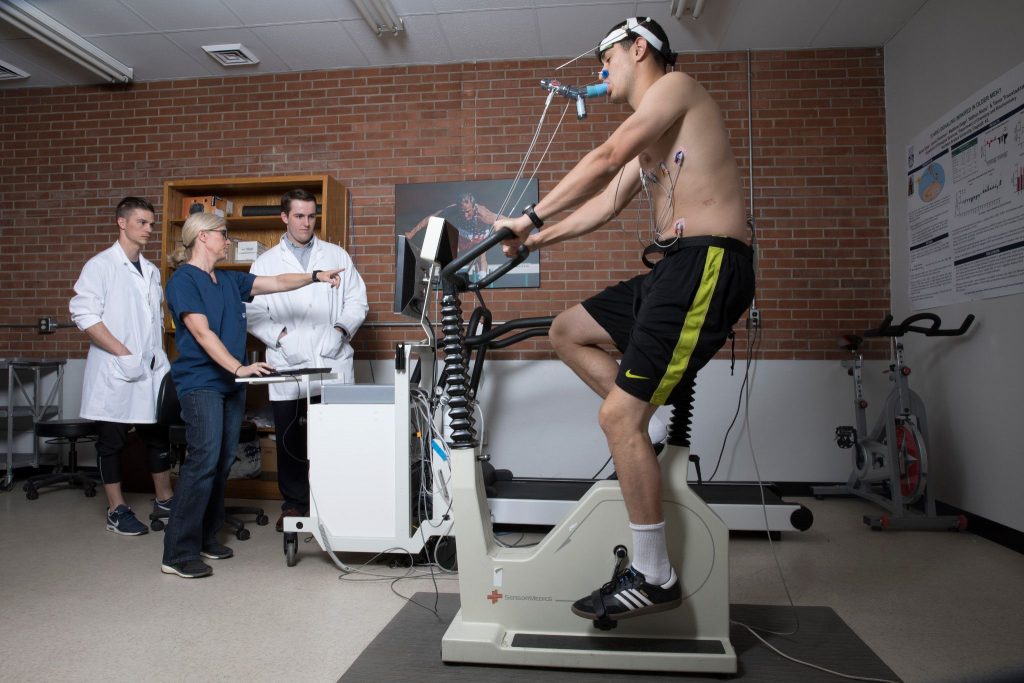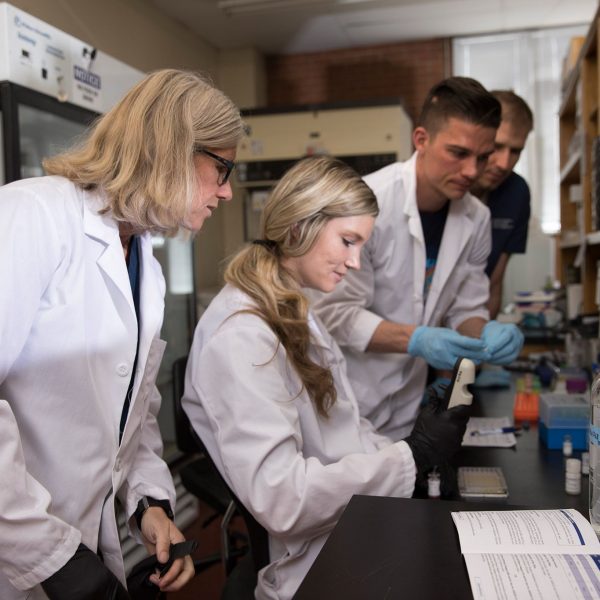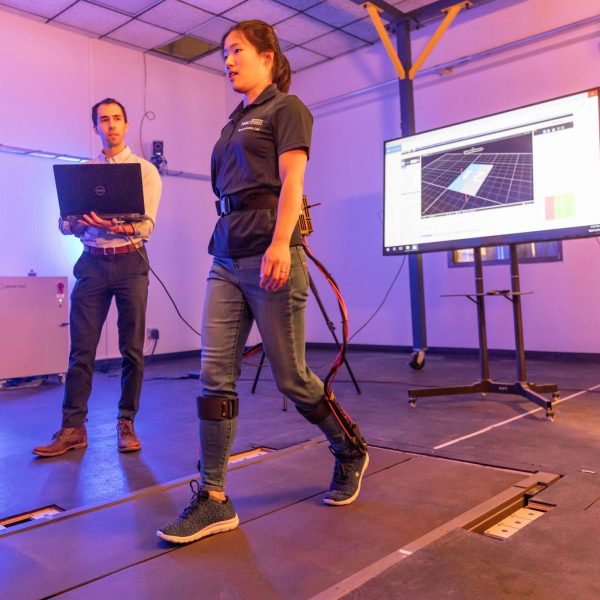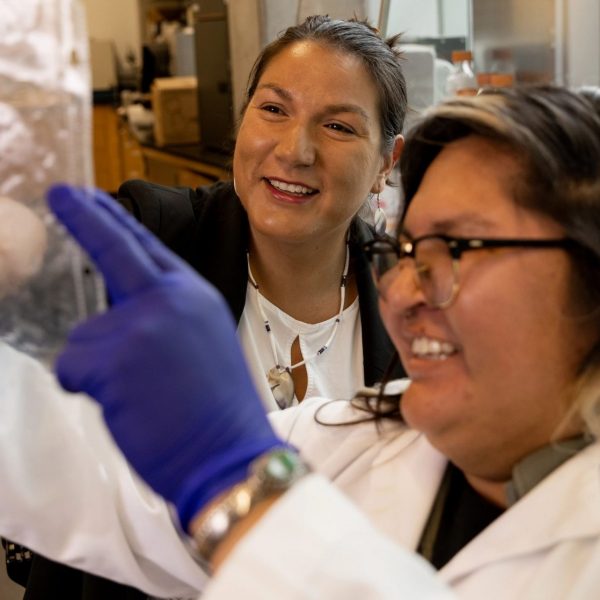Undergrad researchers join redox biologist Tinna Traustadóttir in a clinical study of broccoli-based interventions for healthier aging.
A new study led by NAU Associate Professor Tinna Traustadóttir is investigating the relationship between aging, exercise, and phytonutrients—nutrients found in plants such as broccoli. Paradoxically, her team includes undergraduates from a decidedly younger population.
Can exercise and broccoli be paired to improve aging?
Funded through a $448,752 grant from the National Institutes of Health’s (NIH) National Institute on Aging, the study builds on Traustadóttir’s previous research in the field of oxidation-reduction, or “redox” biology, aiming to understand the specific age-related changes taking place at the molecular level that increase oxidative stress and reduce the ability of older individuals to adapt to physiological stress. Along with her lab team, Traustadóttir examines whether age-related deficits observed in sedentary older individuals can be restored through exercise or phytonutrient interventions.
“Our lab was the first to show that acute exercise stimulates an important cell signaling protein called Nrf2 in humans,” Traustadóttir says. “The decline in the quality of cell signaling may be a normal part of aging, but we believe it can be modulated by lifestyle, including nutrition and physical activity. Our previous work has shown that older adults have an impaired response to a single session of exercise compared to younger people. In this study, we’re investigating whether we can improve the body’s response by combining acute exercise with sulforaphane, a phytochemical found in cruciferous vegetables such as broccoli, kale, Brussels sprouts, and cabbage. The insights we gain could have an enormous impact by improving the health and well-being of older Americans.”

Traustadóttir and her team are working with Assistant Professor Robert Buscaglia on power and data analyses. “Robert is the biostatistician and a co-investigator on the project,” she says. “He has a very unique background because he has two PhDs—one in Biochemistry and Molecular Biology, and the other in Applied Mathematics—so he understands both physiology and statistics.”
The team is also collaborating with co-investigators at Villanova University: Aimee Eggler is a biochemist who investigates the molecular mechanisms of foods such as broccoli and kale and their role in preventing chronic disease, while Anthony Lagalante brings expertise as an analytical chemist to the team.
“We’ll test our hypothesis using two different experiments,” Traustadóttir says. “The first experiment will use a unique approach, where instead of actually having the study subjects ingest any sulforaphane, we will stimulate immune blood cells collected from them. This will control for any individual differences in digestion of the phytonutrient. The second experiment will measure the responses in blood samples collected from older men and women before and after exercise, after ingesting either the sulforaphane supplement or a placebo. We will then be able to compare the responses from each individual from the first experiment to the second experiment, and between the supplement and the placebo response.”
Undergraduates conduct research as they learn molecular biology and clinical testing
The Traustadóttir Lab offers many opportunities for both undergraduate and graduate students. Izaac Molina, Elyse Policastro, and Kayla Harnist are currently working on the study, learning through Traustadóttir’s mentoring as well as from her collaborators. Buscaglia, for example, is training students on the team in data management and analysis techniques.
Students in the lab are responsible for many different aspects of a study like this one, including assisting with screening participants, conducting the exercise trials, processing the blood samples, and performing analyses.
“One of the things that is unique about the work we do,” Traustadóttir says, “is that we are doing molecular measures in clinical research—so these students get trained both in clinical testing and clinical procedures as well as in molecular biology and wet lab procedures. Three of my former students have gone on to medical school; some have gone on to be physician assistants, naturopathic doctors, and physical therapists; while others have gone into academia as postdocs and researchers.”
“When you start seeing the students take ownership—for example, when I walk into the lab, and I see a student explaining something to another student who’s new and it’s all correct—for me, that’s probably one of my proudest moments.”
When I see a student explaining something to another student who’s new and it’s all correct—for me, that’s probably one of my proudest moments.
Molina, a senior Biology major from Tucson, joined Traustadóttir’s lab in his junior year to gain some hands-on experience. “I had done plenty of biology coursework prior to joining the lab, but I wanted to see the material applied in a practical way,” Molina says. “The aging process is so complex, yet so essential to the human experience, that I wanted to contribute to research focused on it.”
As a returning researcher this year, Molina trains newer lab members on common procedures. “It feels good to help Dr. Traustadóttir through this stressful yet exciting process, and I love our lab community,” he says.
Molina received the Hooper Undergraduate Research Award (HURA) in spring 2022, enabling him to launch a related project of his own. He will present his results at NAU’s Hooper and Urdea Poster Presentations and Undergraduate Research Symposium in spring 2023, and encourages other NAU undergraduates to consider participating in research. “Regardless of your desired life path, being able to observe and contribute to the creation of new knowledge is something that is such a blessing,” he says. “Being involved in research has given me a newfound perspective and appreciation for my chosen course of study. I believe that getting involved in research can really open your eyes to the complexities and intricacies of the scientific world.”
After graduation, Molina will stay at NAU to earn a second bachelor’s degree in Computer Science and continue research in this fast-changing field. “I hope to combine my interests in Computer Science and Biology to innovate in the field of biotechnology.”
Traustadóttir leads with passion
“In my lab, we’re passionate about healthy aging and preventing disease,” Traustadóttir says. “We don’t use the term anti-aging because we focus on successful aging. We want people to be healthy and be able to enjoy life as long as possible. I’m excited about this project because we’re building on our previous work and taking another step in our journey. And it’s so simple, but this combination of exercise and green nutrients could have big implications. It could be really cool.”
As for Molina, being an undergraduate researcher has been unforgettable. “I believe I’m truly making an impact by working towards discoveries that will enable successful aging in an affordable and practical way,” Molina says. “It’s incredible how all-encompassing redox biology is, and how many diseases can be linked to the body’s issues with redox regulation. Cardiovascular disease, cancer, diabetes, and even anxiety and depression have all been partially linked to a lack of redox balance in the body.”
Traustadóttir and her protégés continue to make strides in redox research. Who knows what they will discover next?








